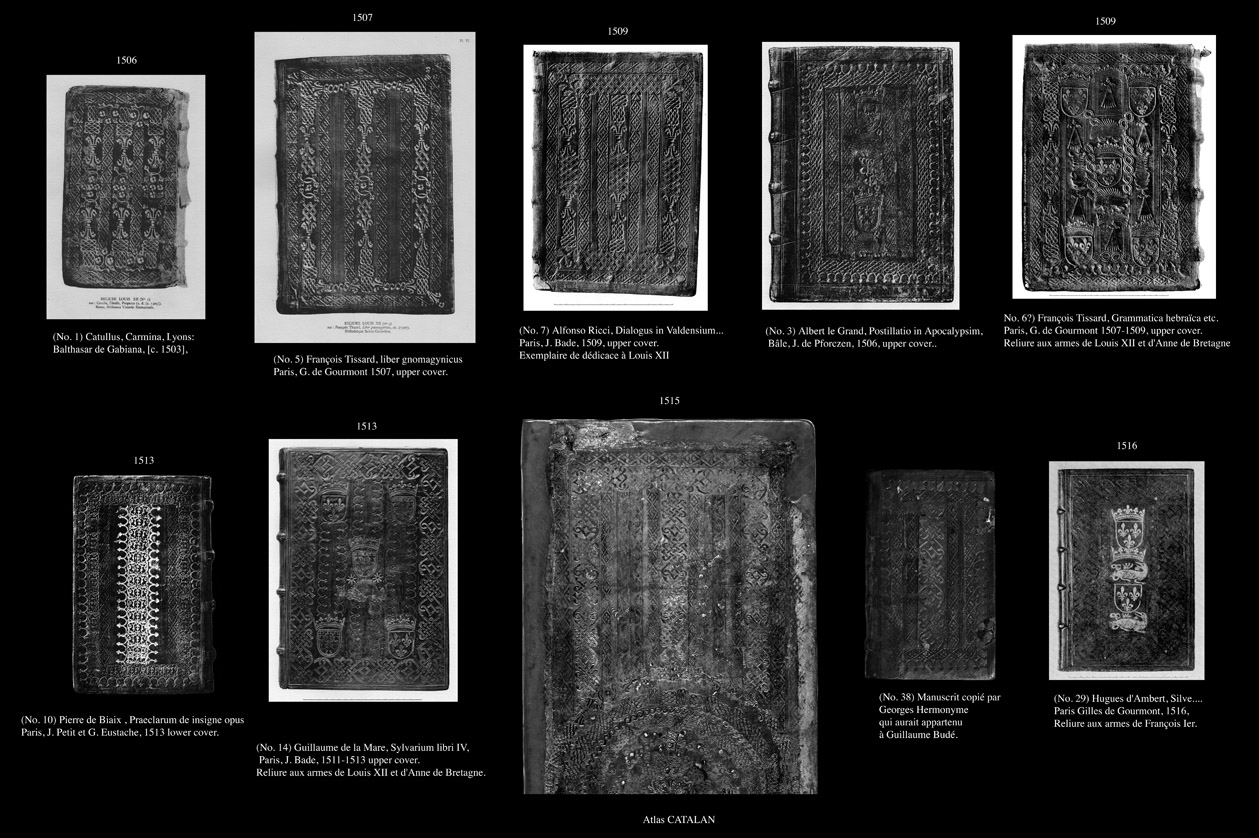

| What I wanted to do on this page is to look for some sort of chronological order in the Louis XII bindings, based on tooled imprints and design as opposed to other dating methods. A number of authors have proposed the binding that happens to be no, 1 in our inventory list, Catullus, Carmina, Lyons: Balthasar de Gabiana, 1503, as the earliest binding from the atelier of Louis XII. There are some good reasons to suppose this to be correct, it appears to be the least refined of the collection as though a first attempt with these tools. Anthony Hobson suggested in 1999, that 1506 may be the earliest likely date for this binding. |
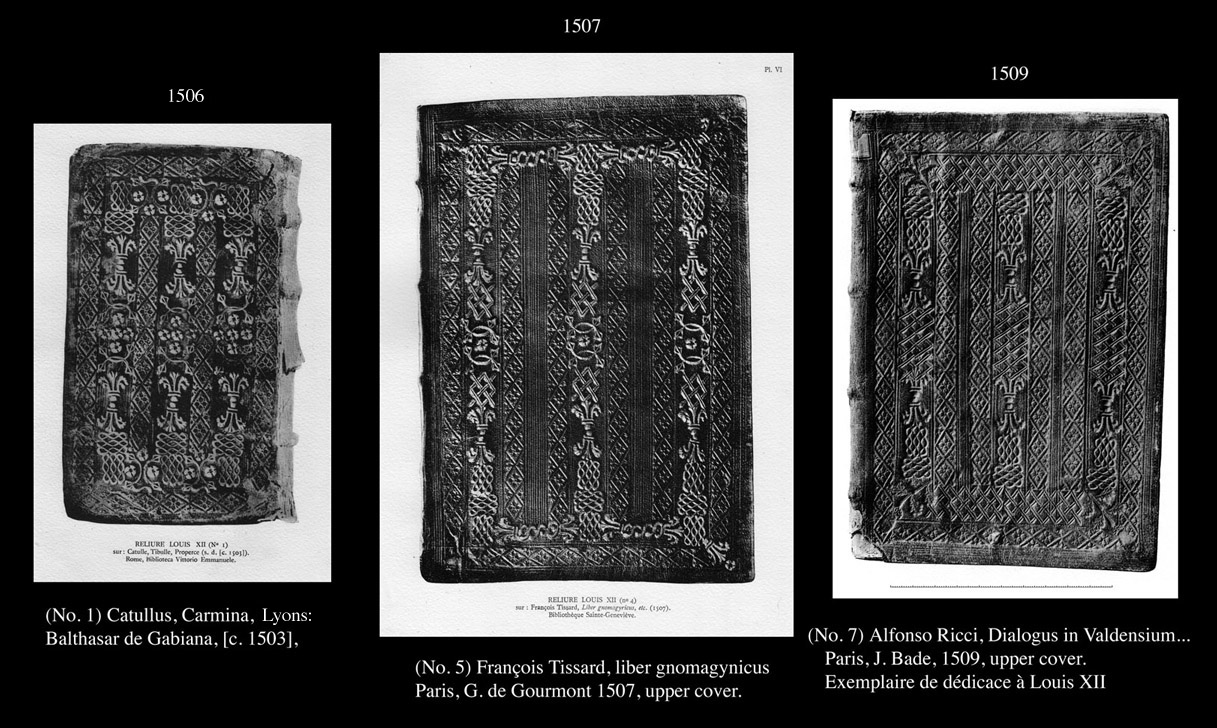
| Perhaps it might be more correct to say that the Catullus binding is the first easily recognizable Louis XII binding with a full array of tools that then appear in a very similar series of bindings that are in evidence at least up to 1509, (see no. 7) when an additional new tool appears in the corners, with the shape of an acorn. Dacier notes this as Italian, and found also in the plaque bindings of Grolier (see Nixon 1965 pl. V, Astronomici Veteres 1499 (also Gid 1984 pl. 7 fle 40) |
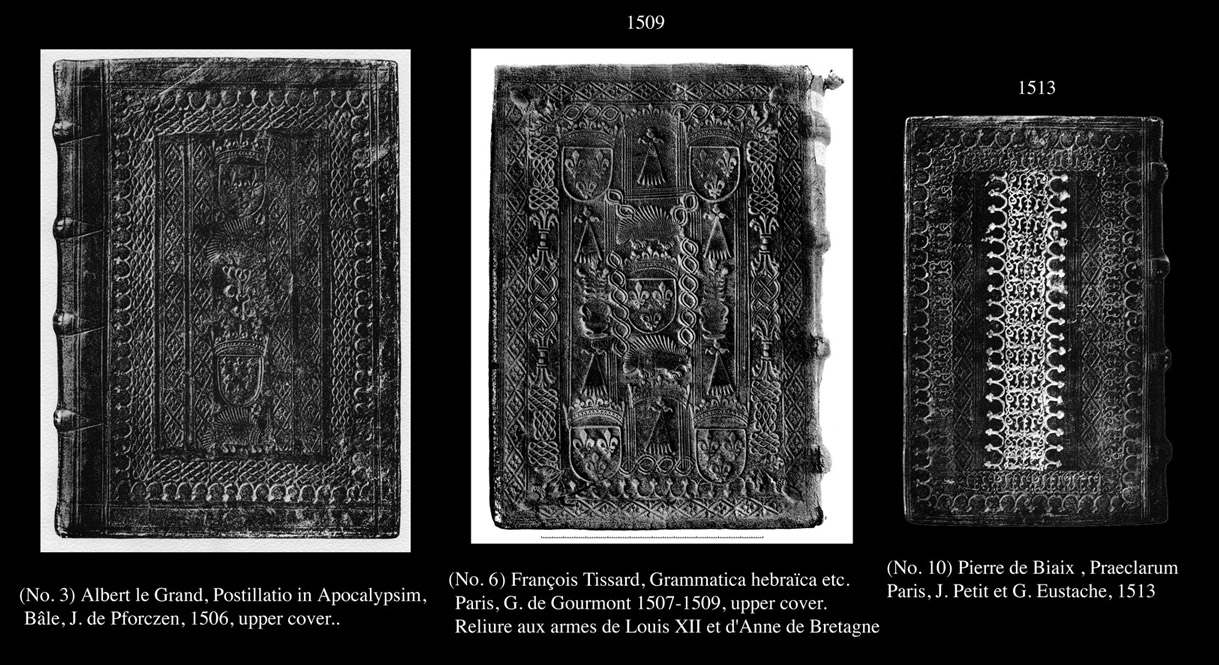
| If we can separate the bindings by the appearance of a new tool which then is used more and more extensively it may be Dacier's tool 'K' which he identifies as French, absent from the early bindings (with the possible exception of No.3) it appears to arrive around in force around 1509 and become more and more present to be the most dominant tool very quickly. Binding No. 10 is more or less identical to two other bindings that appear to be firmly dated to 1510 (Dacier no.7 and 8) these bindings have been made almost entirely with only three tools, two are French and the third very Italian, catalogued by Dacier as 'M'. |
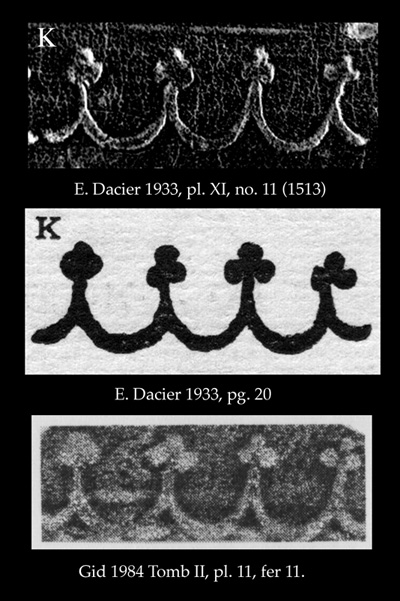
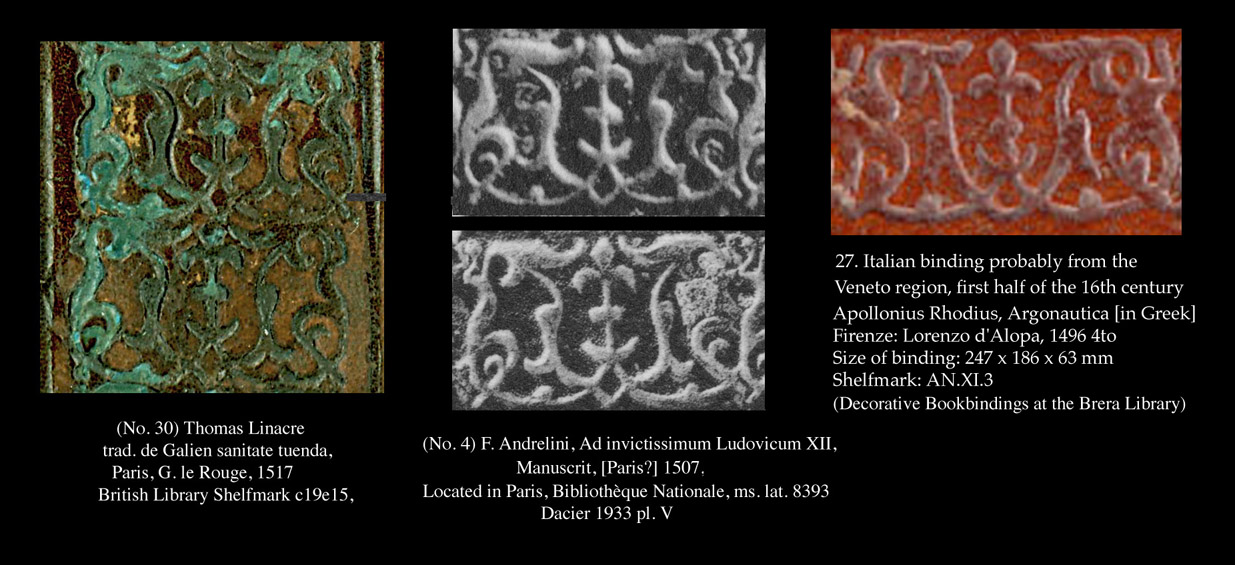
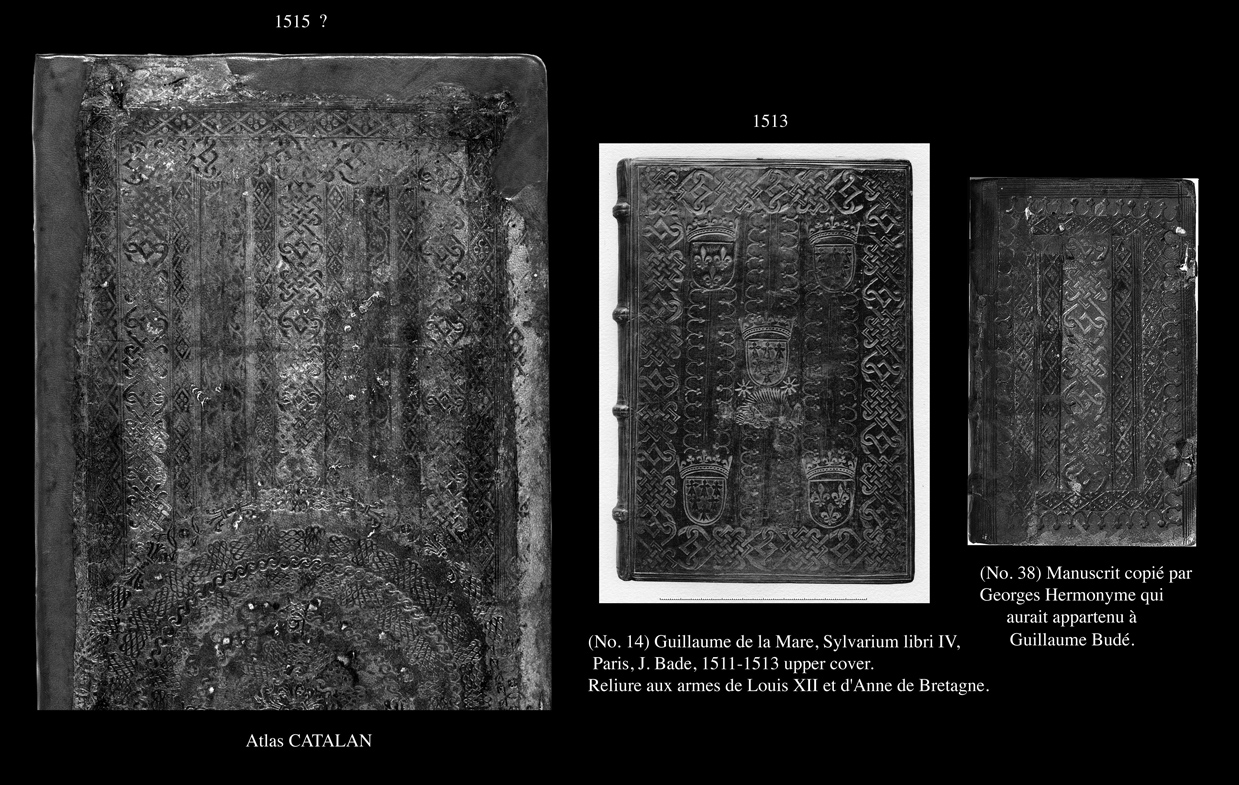
| In the last phase of the Louis XII bindings we see the appearance of a new tool that begins to take over the dominance of K and M it is Dacier's tool "U". Dacier was not sure if this sort of tool was specifically Italian. a quick look through Italian bindings of the 15th century reveals a multitude of knot-work designs. The appearance then of this knot-work tool in the atelier Louis XII, would seem like an almost retrospective attempt to evoke the style of Italian bindings during the preceding century. |
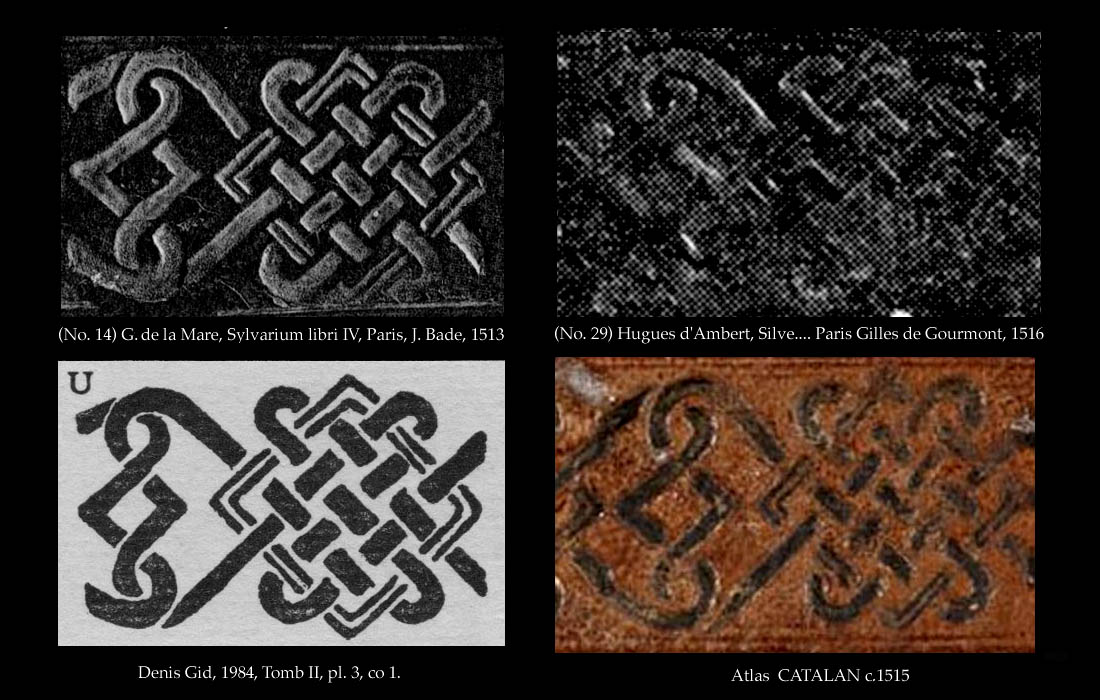
| With these few tools we can get a rough handle on the chronology, and in some cases rectify dates that appear suspect. In Comparative Diagram 6, I show selected examples of the 'U' imprint including a François Ier example (No. 29) on the next page we will look at this more closely as well as tackle the other François Ier examples. |
| about the author | VIRTUAL BOOKBINDING |